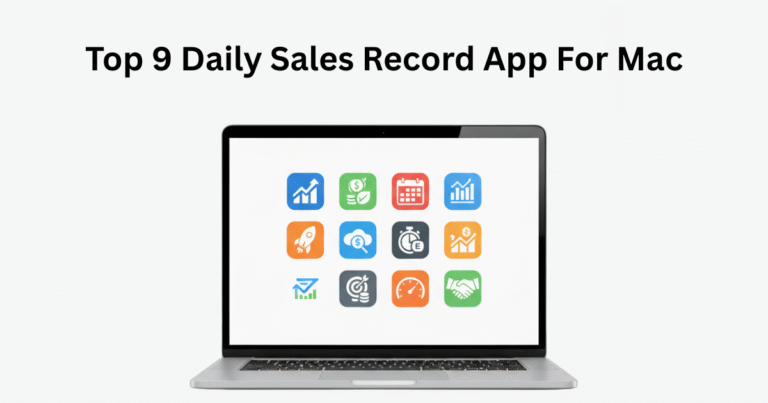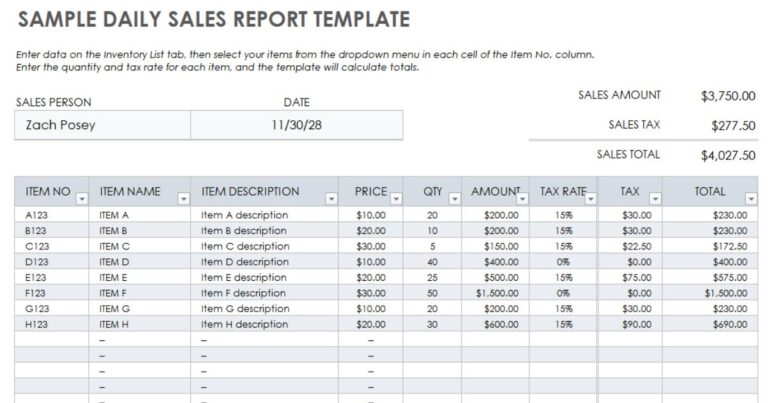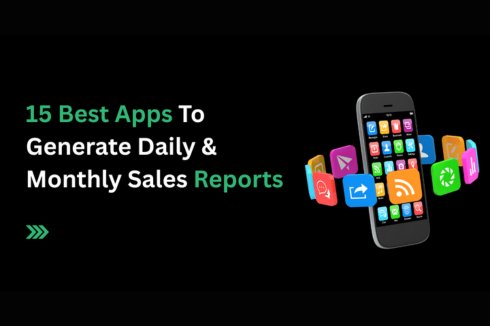10 Ways Sales Tracking Apps Boost Your Business
Sales tracking apps are the must-have tools for businesses mainly to optimize the operations and maximize sales efficiency. These tools provide actual customer data and automate routine tasks. The best part is that you can monitor team performance seamlessly.
The app offers some advanced features, such as accurate sales recording, inventory management, and multi-channel tracking. They help businesses to make informed decisions that boost productivity. Ultimately, it ensures to drive revenue.
One such powerful tool is Daily Sales Record, designed to help businesses track sales, manage customer data, and improve sales performance. We helps businesses stay organized and increase efficiency with real-time tracking, automated reporting, and seamless integration.
What Is Sales Tracking For Business?
Sales tracking for business refers to the systematic process of monitoring and managing every stage of the sales cycle, from lead generation to deal closure. It involves recording critical sales data such as customer interactions, conversion rates, revenue, and individual or team performance metrics.
By using advanced sales tracking tools, businesses gain valuable insights into sales trends, identify successful strategies, and evaluate performance against set targets. This data-driven approach enables informed decision-making, improves sales forecasting, and optimizes strategies.
Additionally, sales tracking helps businesses understand customer behavior, tailor offerings, and enhance relationships, ultimately driving business growth and profitability. It is an essential practice for improving efficiency and achieving sustained sales success.
How Sales Tracking App Helps Boost The Business? [10 Best Ways to Know]
1. Boost Productivity
Sales tracking apps boost productivity by automating repetitive tasks like data entry, follow-ups, and reporting. This allows your team to focus on what really matters selling.
These apps streamline workflows, reducing the time spent on administrative work. Instead of manually updating records, your team can track real-time sales data, generate reports, and prioritize leads with just a few clicks.
Apps like Monday Sales CRM help your sales team stay organized, efficient, and on track by reducing manual tasks. The more time your team spends on productive activities, the better their performance will be.
With improved workflow management, your business will run smoother, and your team will be more effective at closing deals and driving growth. This ultimately leads to higher productivity and better results across the board.
2. Accurate Sales Recording
Sales tracking apps give you precise, real-time data, removing the chances of errors in your sales records. By centralizing everything in one place, you get accurate updates instantly. This means your data is always current and reliable.
Automated data capture lets you focus on sales instead of manually entering information. The result? Smarter decisions and better tracking of your progress.
Accurate records also help you build trust with clients and optimize your operations. You’ll notice fewer mistakes and a clearer path to achieving your business goals.
3. Inventory Management
Sales tracking apps streamline inventory management by syncing sales data with stock levels in real time. This helps you avoid overstocking or running out of products.
You receive automatic alerts when it’s time to reorder, ensuring your stock is always at the right level. By automating inventory updates, you can reduce the time spent manually checking stock and focus more on sales.
This leads to more efficient operations and fewer missed sales opportunities. With accurate inventory tracking, you stay ahead of demand and optimize your supply chain management.
4. Customer Insights
Sales tracking apps provide valuable insights into customer behavior and preferences. By analyzing purchase patterns, these apps help you understand what drives your customers’ decisions.
You can segment your customer base based on data, allowing you to tailor marketing and sales strategies effectively. You can identify trends and spot opportunities for cross-selling or upselling with real-time data. This level of insight helps you personalize your approach, improve customer engagement, and ultimately drive higher sales.
By understanding your customers better, you can better meet their needs and build stronger, long-term relationships.
5. Performance Monitoring
Sales tracking apps allow you to monitor your team’s performance in real-time. You can track individual progress, identify top performers, and spot improvement areas.
These apps provide key metrics like conversion rates, sales activity, and quota achievement, helping you stay on top of your team’s goals. With clear, visual reports, you can quickly assess performance trends and make data-driven decisions to improve results.
This enables you to give targeted feedback, motivate your team, and adjust strategies for better outcomes. By tracking performance closely, you can drive more consistent sales growth.
6. Revenue Forecasting
Revenue forecasting relies on historical sales data to project future earnings with precision. You gain insights into expected growth and seasonal changes by analyzing past trends. This allows you to plan resources, adjust strategies, and prepare for shifts in the market.
Accurate revenue forecasts can optimize budgeting, staffing, and inventory management. They’ll also help you set achievable goals, improve cash flow, and stay ahead of potential challenges. Predicting future revenue enables more thoughtful decision-making and better overall business planning.
7. Time Efficiency
Sales tracking apps save you time by automating routine tasks like data entry, follow-ups, and reporting. With everything centralized in one platform, you can access important information instantly without searching through multiple systems.
Automated alerts and reminders ensure no forgotten tasks, helping you stay on top of deadlines. This efficiency reduces manual effort, allowing you to focus on higher-value activities like closing deals.
By streamlining operations, sales tracking apps help you work faster, make quicker decisions, and boost your productivity.
8. Multi-Channel Tracking
Multi-channel tracking consolidates sales data from various platforms into one unified view. Whether your sales happen online, in-store, or via mobile, these apps give you a complete picture of your performance across all channels.
You can analyze how each channel contributes to overall sales, allowing you to optimize strategies accordingly. This holistic approach helps you identify which channels are most effective and where improvements are needed.
With multi-channel tracking, you make data-driven decisions to enhance your sales efforts and maximize revenue.
9. Sales Opportunity Identification
Sales tracking apps identify sales opportunities by analyzing customer interactions and behavior patterns. By reviewing purchase history and trends, these apps highlight areas where you can increase sales, whether through upselling or targeting specific customer segments.
They provide insights into which products or services are underperforming, helping you redirect efforts to more profitable areas. You can also identify emerging customer needs and act on them quickly. By recognizing these opportunities early, you can optimize your sales approach and increase overall revenue.
10. Customer Retention
Sales tracking apps improve customer retention by providing insights into customer behavior and engagement. By tracking past purchases and interactions, these apps help you identify at-risk customers and take proactive steps to retain them.
You can create personalized offers, send timely reminders, or offer loyalty incentives based on data. Additionally, these apps allow you to track customer satisfaction and respond to feedback quickly. By staying connected and delivering value, you can build long-term relationships, increasing customer loyalty and repeat business.
How To Start With a Sales Tracking App For My Business?
Starting with a sales tracking app can transform your business by streamlining processes, increasing efficiency, and boosting sales performance. Here’s a step-by-step guide on how to get started:
Step 1: Define Your Business Needs
Before choosing a sales tracking app, understand what your business needs from the tool. Identify key features like inventory management, reporting, or customer tracking. Knowing your requirements will guide your selection process and ensure the app suits your business model.
Step 2: Research and Choose the Right Sales Tracking App
Look for apps that offer features aligned with your business needs. Consider factors like ease of use, integrations with existing tools (CRM, email, payment systems), and pricing.
Choose a platform with strong customer support and user-friendly interfaces. Make sure the app scales with your business as it grows.
Step 3: Set Up Your Sales Tracking App
Once you’ve selected an app, begin the setup process. This typically involves:
Creating user profiles: Add team members who will use the app and set roles (admin, manager, salesperson).
Importing your existing data: If you are migrating from another system, you must import sales data, customer lists, and inventory details.
Customizing fields: Tailor the app to your business by customizing fields such as lead stages, product categories, or sales goals.
Step 4: Train Your Team
Ensure everyone involved knows how to use the app effectively. Conduct training sessions for your sales team on features like logging sales, tracking customer interactions, and generating reports. Provide ongoing support to address any issues and reinforce proper usage.
Step 5: Set Sales Goals and Metrics
Define your sales targets within the app. Set specific, measurable goals like revenue, leads closed, or new customers acquired. These goals will help the app track performance and give you actionable insights into areas for improvement.
Step 6: Integrate with Other Tools
If you use other software for marketing, customer service, or accounting, integrate the sales tracking app with these systems. This will create a seamless workflow, reduce manual data entry, and give you a unified view of your business operations.
Step 7: Monitor Performance Regularly
Start tracking sales performance in real-time. Regularly review the reports and dashboards to identify trends, spot opportunities, and measure progress toward your goals. Use the data to optimize your strategies and make data-driven decisions.
Step 8: Adjust and Optimize
As you begin using the app, refine your processes. Based on the data, adjust your sales strategies and improve workflows. Continuously monitor the app’s performance and adjust to shifting business needs or market conditions.
What Are The Best Practices For Using A Sales Tracking App?
To get the most out of your sales tracking app, it’s crucial to follow a set of best practices. These strategies ensure efficiency, accuracy, and consistent growth.
- Establish specific, measurable sales objectives that align with your business priorities, such as revenue targets or lead conversion rates.
- Tailor the app’s fields, stages, and workflows to match the unique needs of your sales process, ensuring seamless integration into daily operations.
- Make it a habit to regularly update customer interactions, lead statuses, and sales progress to ensure the data in your app is always current and reliable.
- Automate repetitive tasks such as lead assignments, follow-ups, and reminders to reduce manual effort and improve workflow consistency.
- Analyze data within the app to segment your customer base by behaviors and demographics, allowing for highly targeted and personalized sales approaches.
- Regularly track individual and team performance metrics through real-time dashboards to identify strengths and areas that require improvement.
- Ensure your sales tracking app works seamlessly with your CRM, marketing platforms, and inventory systems to streamline operations and enhance cross-team collaboration.
- Offer regular training sessions to ensure your team is well-versed in app features and can utilize the system to its full potential.
- Use the app’s performance data to assess the effectiveness of your current sales goals, and adjust them as needed to reflect market shifts or team progress.
- Implement strict access controls, encryption, and secure login protocols to protect sensitive customer and business data stored within the app.
In Closing
Sales tracking apps are invaluable tools for businesses looking to enhance efficiency, streamline sales processes, and drive growth. They provide real-time insights, improve productivity, and help businesses make data-driven decisions to boost revenue.
By automating routine tasks and offering in-depth performance analysis, these apps empower teams to reach their full potential.
To take your business to the next level, try Daily Sales Record. The app designed to simplify sales tracking, increase accuracy, and optimize your workflow. Start improving your sales performance today!
Frequently Asked Questions
Question: What are the key features to look for in a sales tracking app?
When selecting a sales tracking app, look for features like real-time sales reporting, automated task management, customer data integration, and performance analytics. The app should also be scalable and easily integrate with your existing tools.
Question: How does a sales tracking app improve customer relationships?
Answer: Sales tracking apps provide detailed customer insights, including purchase history and communication logs. By tracking interactions, you can personalize follow-ups, offer tailored promotions, and anticipate customer needs.
Question: Can sales tracking apps be used by small businesses?
Answer: Absolutely. Sales tracking apps are especially beneficial for small businesses as they automate tedious tasks, offer real-time insights, and streamline sales processes. They help businesses stay organized and competitive, even with limited resources.
Question: How does sales forecasting work with tracking apps?
Answer: Sales tracking apps use historical data to analyze sales trends and predict future revenue. By assessing past performance, they generate accurate forecasts that help businesses plan resources, adjust strategies, and set realistic sales targets.
Question: What is the ROI of using a sales tracking app?
Answer: The ROI of a sales tracking app is seen through increased sales productivity, improved customer retention, and more accurate forecasts. By automating processes and providing real-time insights, these apps reduce manual errors, optimize workflows, and ultimately drive higher revenue.


